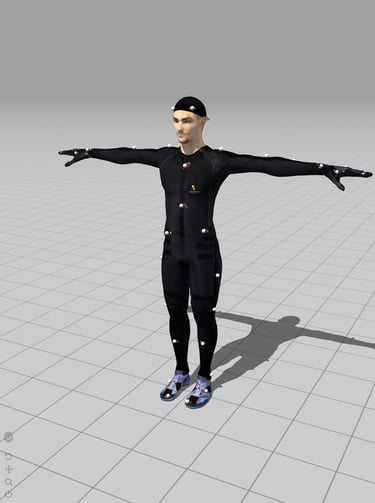Understanding AI-Powered Motion Capture: A Technical Research Breakdown (Part 1)


Understanding AI-Powered Motion Capture: A Technical Research Breakdown (Part 1)
Introduction to AI-Enhanced Motion Capture
Motion capture technology serves as the foundation for realistic animation in video games, films, and various digital media applications. Recent advancements in artificial intelligence have transformed traditional motion capture approaches. Systems such as PlasK, DeepMotion, and ROKOKO represent a significant paradigm shift in how motion data is captured and processed.
Transformation of Motion Capture Technology
Traditional motion capture methodologies required specialized marker-based suits, sophisticated camera arrangements, and dedicated studio environments. The integration of artificial intelligence into motion capture systems introduces several significant improvements:
Enhanced precision in movement detection and reproduction
Accelerated data processing capabilities
Increased versatility across varied capture environments
Potential cost reductions compared to conventional systems
Research Focus and Objectives
This technical research examines AI-powered motion capture systems from a purely technical perspective. The primary research question addresses which AI-based motion capture system provides optimal balance between accuracy, latency, and error processing capabilities under various environmental conditions and budgetary constraints.
Significance of the Research
The findings of this research hold relevance for multiple industries including gaming development, animation production, virtual reality applications, and biomechanical analysis. The selection and implementation of appropriate motion capture technology directly impacts:
Overall production quality
Operational efficiency
Project timeline management
Resource allocation and utilization
The technological capabilities of motion capture systems significantly influence the quality of animation, determining whether movements appear artificial or naturalistic.
Analytical Framework
The research employs a structured analytical framework to evaluate these systems across four principal dimensions:
Technical Performance Assessment: Quantitative analysis of accuracy in capturing various movement types and complexities.
AI Implementation Impact: Comparative evaluation of specific enhancements provided by artificial intelligence relative to traditional capture methodologies.
Environmental Variable Influence: Systematic testing of performance across controlled environmental conditions.
Technical Limitations Analysis: Identification of current technological constraints and potential areas for further development.